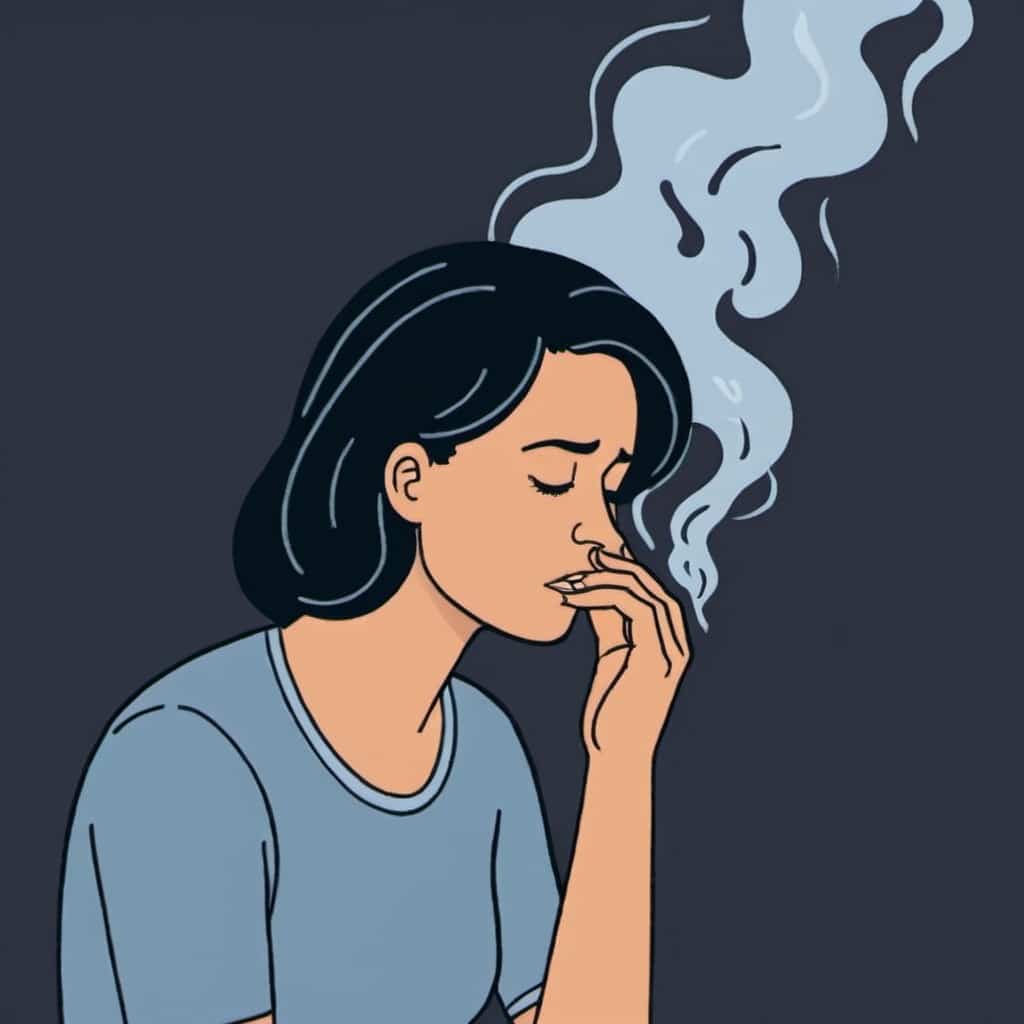In a massage therapy practice, it’s not uncommon to encounter clients whose muscular tension and chronic pain seem to be linked to psychosocial factors, such as stress or overwork. These physical signals can sometimes mask a deeper problem: burnout. Although massage therapists are not qualified to make a diagnosis, they play a crucial role in providing a space for relaxation and recognizing the warning signs of this disorder. But what is burn out, and how can we understand it in the context of touch therapy?
| Contents: What is burnout? Signs of burnout | beyond physical tension Causes of burnout The role of massage therapy in prevention and support Prevention strategies: small gestures, big impact Caring support |
What is burnout?
Burn out, according to the World Health Organization, is defined as “a feeling of intense fatigue, loss of control and inability to achieve concrete results at work”. It occurs when work-related stress becomes chronic, setting up a vicious circle: faced with overload, those affected redouble their efforts to regain satisfaction, but with no lasting results. This spiral gradually leads to exhaustion, affecting both body and mind.
Signs of burn out | beyond physical tension
The first signs of burn out are often physical: persistent fatigue, muscular pain, backache, insomnia or digestive problems. These symptoms, although common in massage therapy, must be observed with particular care when they are accompanied by psychological suffering:
1) feelings of exhaustion or fatigue;
2) increased mental distance from work, or feelings of negativism or cynicism related to work
3) a feeling of inefficiency and lack of accomplishment.
In some cases, burnout can evolve into more serious problems, such as eating disorders, substance dependency (alcohol, medication) or full-blown depression.
Causes of burn out
Burn out is the result of a series of work-related factors, including :
- An overload of tasks or unclear responsibilities.
- A lack of recognition or autonomy.
- Excessive pressure, often self-imposed by perfectionists.
Certain professions, particularly those involving a high emotional charge such as nursing, are particularly affected. Emotional loneliness and heavy personal responsibilities can also aggravate the situation.
The role of massage therapy in prevention and support
Massage therapists can be invaluable allies in managing the symptoms of burn out:
- Providing a space for relaxation: A massage session can reduce physical tension and encourage a reconnection with the body, often neglected in a context of chronic stress.
- Observe without judging: An attentive massage therapist can detect signs of overwork or exhaustion, such as tense posture or recurring anxiety-related pain.
- Encourage a holistic approach: By establishing a caring relationship, you can suggest that your customers consult a qualified healthcare professional to explore the psychological aspects of their malaise.
Prevention strategies: small gestures, big impact
To prevent work-related stress developing into burnout, here are a few practical tips you can share with your customers:
- Learn to delegate: Make a list of priorities and agree to delegate certain tasks.
- Take a break: Practice relaxation, deep breathing or regular massages.
- Reduce sources of stress: Identify stressful situations to better anticipate them.
- Maintain a balance: Avoid bringing work concerns home, and maintain a clear boundary between personal and professional life.
Caring support
As a massage therapist, your role is not to solve your clients’ problems, but to accompany them on their journey with kindness. By creating a welcoming environment and respecting their limits, you can help them regain a sense of security and control. In addition, it’s essential to remind them that they can also turn to an occupational physician, who can assess the need for specialized care or suggest suitable adjustments to their workstation.
Each session is an opportunity to encourage your customers to take care of themselves, not only physically, but also emotionally and mentally. The occupational health and safety department can also be a valuable ally in identifying risk factors in their work environment and proposing concrete solutions. Burnout is not inevitable, and every gesture counts to help them regain their balance and serenity.
To remember:
- Burnout occurs when chronic stress at work leads a person to over-invest with no lasting results.
- Multiple signs: persistent fatigue, muscle pain, sleep disorders, anxiety, irritability and emotional isolation.
- Several situations can lead to burn-out: work overload, lack of recognition or autonomy, and a tendency to perfectionism are often to blame.
- Massages can relieve tension, promote relaxation and help reconnect body and mind, while guiding customers towards holistic care of their well-being.
Sources :
- World Health Organization – International Classification of Diseases – ICD 11. Website: icd.who.int. 2022
- French National Institute for Research and Safety. Website: inrs.fr. 2024
- Vidal. Burn out. Website: vidal.fr. 2021

